Far Thoughts and Pale Gods Read online
Page 21
The valve that had given us access was still open, pushing its flaps in and out. I kicked away from the pylon. The bear’s grip was fierce. The flaps loomed, slapped against us, and closed with a final sucking throb. We were on the other side, lying on the floor. The bulkhead again was impassively blank.
The bear rolled away from my arm and stood up. “Best to try other way!” he suggested. “More easy faced, I think.”
I unshipped the six-bolted hatch and we crawled through, then doubled back past my cabin. The corridor, now that I thought of it, was strangely naked. In any similar region on my original ship there would have been pipes, access panels, printed instructions—and at least ten cabin doors.
A few yards beyond my cabin, the corridor curved and the interiors became more diverse. We found several small cubbyholes, all empty.
Sonok walked cautiously ahead. “Here,” he said. “Can with breasts was here.”
“Gone now,” I observed. We stepped through another six-bolt hatch into a chamber with a vague resemblance to a command center. In its larger details, it resembled the bridge of my own ship, and I rejoiced for that small sense of security.
“Can you talk to it?” Sonok asked.
“I can try. But where’s a terminal?”
The bear pointed to a curved bench in front of a square, flat surface, devoid of keyboard, speaker, or knobs. Didn’t look much like a terminal—though the flat surface resembled a visual display screen—but I wasn’t ashamed to try speaking to it. Nor was I abashed when it didn’t answer. “No go. Something else.”
We looked around the chamber for several minutes but found nothing more promising. “It’s like a bridge,” I said, “but nothing matches specifically. Maybe we’re looking for the wrong things.”
“Machines run themselves?” Sonok suggested.
I sat on the bench, resting an elbow on the edge of the “screen.” Nonhuman technologies frequently use other senses for information exchange. Where we generally limit machine-human interactions to sight, sound, and sometimes touch, Crocerians use odor, and Aighors control their machines with microwave radiation from their nervous systems. I laid my hand across the screen. It was warm to the touch, but I couldn’t detect any variation in the warmth. Infrared is an inefficient carrier of information for creatures with visual orientation. But snakes use infrared to seek prey—
“Snakes,” I said. “The screen is warm. Is this part of the snake ship?”
Sonok shrugged. I looked around the cabin to find other smooth surfaces. They were few. Most were crisscrossed with raised grills. Some were warm to the touch. There were any number of possibilities—but I doubted I would hit on the right one quickly. The best I could hope for was the survival of some other portion of my ship.
“Sonok, is there another way out of this room?”
“Several. One is around gray pillar,” he said, pointing. “Another hatch with six dogs.”
“What?”
“Six …” He made a grabbing motion with one hand. “Like the others.”
“Throw-bolts,” I said.
“I thought my Anglo was improving,” he sulked.
“It is. But it’s bound to be different from mine, so we both have to adapt.” We opened the hatch and looked into the next chamber. A haze of cloying smoke drifted out and immediately set ventilators to work. The lights flickered feebly, and wrecked equipment gave off acrid smells. The bear held his nose and jumped over the seal for a quick walk through the room.
“Is something dead in here,” he said when he returned. “Not like human, but not far. It is shot in head.” He nodded for me to go with him, and I reluctantly followed. The body was pinned between two bolted seats. The head was a mess, and there was ample evidence that it used red blood. The body was covered by gray overalls and, though twisted into an awkward position, was obviously more canine than human. The bear was correct in one respect: it was closer to me than whiskered balls or rainbow snakes.
The smoke had almost been cleared when I stepped back from the corpse. “Sonok, any possibility this could be another mascot?”
The bear shook his head and walked off, nose wrinkled. I wondered if I’d insulted him.
“I see nothing like terminal,” he said. “Looks like nothing work, anyway. Go on?”
We returned to the previous bridge-like chamber, and Sonok picked out another corridor. By the changing floor curvature, I guessed that all my previous estimates as to ship size were appreciably off. What I’d seen from the bubble had appeared endless, but that might have been optical distortion. There was no way of determining either the shape or size of this collage of vessels.
The corridor dead-ended again, and we didn’t press our luck as to what lay beyond the blank bulkhead. As we turned back, I asked, “What were the things you saw? You said there were ten of them, all different.”
The bear held up his paws and counted. His fingers were otterlike and supple. “Snakes, number one,” he said. “Cans with breasts, two; back wall of your cabin, three; blank bulkhead with circular marks, four; and you, five. Other things not so different, I think now snakes and six-dog hatches go together. Snakes know how to use them. Other things—you and your cabin fixtures, all together. But you add dead thing in overalls, fuzzy balls, and who can say where it ends?”
His Anglo really was improving, and rapidly. “I hope it ends someplace,” I said. “I can only face so many variations before I give up. Is there anything left of your ship?”
“Where I was after disruption,” the bear said. “On my stomach in bathroom.”
Ah, that blessed word! “Where?” I asked. “Is it working?” I’d considered impolitely messing the corridors if there was no alternative.
“Works still, I think. Back through side corridor.”
He showed me the way. A lot can be learned from a bathroom: social attitudes, levels of technology, even basic psychology—not to mention anatomy. This one was lovely and utilitarian, with fixtures for males and females of at least three sizes. I made do with the largest. The bear gave me privacy, which wasn’t strictly necessary—bathrooms on my ship being coed—but appreciated, nonetheless. Exposure to a Teddy bear takes getting used to.
When I was through, I joined Sonok in the hall and realized I’d gotten myself turned around. “Where are we?”
“Is changing,” Sonok said. “Where bulkhead was, now hatch. Not sure I see how—is different hatch.”
And it was, in an alarming way: battle-armored, automatically controlled, and equipped with heavily shielded detection equipment. It was ugly and khaki-colored and had no business being inside a ship, unless the occupants greatly distrusted each other.
“I am in anteroom, outside lavatory,” Sonok said, “with door closed. I hear loud sound and something like metal cutting, and open door to this.”
We stayed away from the new hatch. Vague sounds of machines were still audible, grinding and screaming. Sonok motioned for me to follow. “One more,” he said. “Almost forgot.” He pointed into a cubbyhole, about a meter deep and two meters square. “Look like fish tank?”
Filling the cubbyhole was a large rectangular tank filled with murky fluid. It reached from my knees to the top of my head.
“Hasn’t been cleaned,” I said. I touched the glass to feel how warm or cold it was. The tank lighted up, and I jumped back, knocking Sonok over. He rolled into a backward flip and came upright, wheezing.
The light in the tank flickered like a strobe, gradually speeding up until the glow steadied. For a few seconds, it made me dizzy. Then the murk gathered itself together. I bent over cautiously to get a close look. The murk wasn’t evenly distributed. It was composed of animals like brine shrimp, each no more than a centimeter long, with two black eyespots at one end, a pinkish “spine,” and a feathery fringe rippling between head and tail. They were forming a dense mass at the center of the tank. Ordered dots of luminescence crossed the bottom of the tank, changing colors across a narrow s
pectrum: red, blue, amber.
“It’s doing something,” Sonok said. The mass was defining a shape. Shoulders and head appeared, then torso and arms, sculpted in ghost-colored brine shrimp. When the living sculpture was finished, I recognized myself from the waist up. I held out my arm, and the mass slowly followed suit. Then I had an inspiration. In my pants pocket I still had a marker for labeling tapas cube blanks. It used soft plastic wrapped in a metal jacket. I took it out and wrote three letters across the transparent front of the tank: WHO. Part of the mass dissolved and re-formed to mimic the letters, the rest filling in behind. WHO they spelled, then added a question mark. Sonok chirped, and I leaned in closer to see better.
“They understand?” he asked. I shook my head. I had no idea what I was playing with.
WHAT ARE YOU? I wrote.
The animals started to break up and return to the general murk. I shook my head in frustration. So near! The closest thing to communication yet.
“Wait,” Sonok said. “They group again.”
TENZIONA, the shrimp coalesced. DYSFUNCTIO. GUARDATEO AB PEREGRINO PERAMBULA.
“I don’t understand. Sounds like Italian—do you know any Italian?”
The bear shook his head.
“‘Dysfunctio,’” I read aloud. “That seems plain enough. ‘Ab peregrino’? Something about a hawk?”
“Peregrine, it is foreigner,” Sonok said.
“Guard against foreigners … ‘perambula,’ as in strolling? Watch for the foreigners who walk? Well, we don’t have the grammar, but it seems to tell us something we already know. Christ! I wish I could remember all the languages they filled me with ten years ago.”
My marks on the tank darkened and flaked off. The shrimp began to form something different. They grouped into branches and arranged themselves nose-to-tail, upright, to shape a trunk, which then rooted itself to the floor of the tank.
“Tree,” Sonok said.
Again they dissolved, then returned quickly to the simulacrum of my body. The clothing seemed different, however—more like a robe. Each shrimp changed its individual color, making the shape startlingly lifelike.
As I watched, the image began to age. The outlines of the face sagged, wrinkles formed in the skin, and the limbs shrank perceptibly.
My arms felt cold, and I crossed them over my breasts; but the corridor was reasonably warm.
Of course, the universe I grew up in isn’t really confined in a little girl’s mind. But it is one small thread in a vast skein, separated from every other universe by a limitation of constants and qualities, just as death is separated from life by the eternal nonreturn of the dead.
Well, now we know the universes are less inviolable than death, and there are ways of crossing from thread to thread. So these other beings, from similar Earths, are not part of my undifferentiated infancy. That’s a weak fantasy for a rather unequipped young woman to indulge in. Still, the symbols of childhood lie all around—nightmares and Teddy bears and dreams held in a tank; dreams of old age and death. And a tree, gray and ghostly, without leaves. That’s me. Full of winter, wood cracking into splinters.
How do they know?
A rustling from the corridor ahead. We turned away from the tank and saw the floor covered with rainbow snakes, motionless, all heads aimed at us.
Sonok began to tremble.
“Stop it,” I said. “They haven’t done anything yet.”
“You are bigger,” he said. “Not size of dinner.”
“They’d have a rough time putting you away, too. Let’s just sit this out calmly and see what it’s all about.” I kept my eyes on the snakes and away from the tank. I didn’t want to see the shape age any further. For all the sanity of this place, that image might have kept on going, through death and decay down to bones. Why did it choose me; why not Sonok?
“I cannot wait,” Sonok said. “I have not the patience of a snake.” He stepped forward. The snakes watched without a sound as the bear slowly approached. “I want to know one solid thing,” he called back. “Even if it is whether they eat small furry mascots.”
The snakes suddenly bundled backward and started to crawl over each other. Small sucking noises smacked between their bodies. As they crossed, the red ovals met and held firm. They assembled and reared into a single mass, cobralike, but flat as a planarian worm. A fringe of snakes weaved across the belly like a caterpillar’s idea of Medusa.
Brave Sonok was undone. He swung around and ran past me. I was too shocked to do anything but face the snakes down, my neck hairs crawling. I wanted to speak but couldn’t. Then, behind me, I heard:
“Sinieux!”
As I turned, I saw two things, one in the corner of each eye: the snakes fell into a pile, and a man dressed in red and black vanished into a side corridor. The snakes regrouped into a hydra with six tentacles and grasped the hatch’s throw-bolts, springing it open and slithering through. The hatch closed, and I was alone.
There was nothing for it but to scream, then cry. I lay back against the wall, getting the fit out of me as loudly and quickly as possible. When I was able to stop, I wiped my eyes with my palms and kept them covered, feeling ashamed. When I looked out again, Sonok stood next to me.
“We have Indian on board,” he said. “Big, with black hair in three ribbons”—he motioned from crown to neck between his ears—“and a snappy dresser.”
“Where is he?” I asked hoarsely.
“Back in place like bridge. He controls snakes?”
I hesitated, then nodded.
“Go look?”
I got up and followed the bear.
Sitting on a bench pulled from the wall, the man in red and black watched us as we entered the chamber. He was big—at least two meters tall—and hefty, dressed in a black silk shirt with red cuffs. His cape was black with a red eagle embroidered across the shoulders. He certainly looked Indian—ruddy skin, aristocratic nose, full lips held tight as if against pain.
“Quis la?” he queried.
“I don’t speak that language,” I said. “Do you know English?”
The Indian didn’t break his stolid expression. He nodded and turned on the bench to put his hand against a grill. “I was taught in the British school at Nova London,” he said, his accent distinctly Oxfordian. “Then I was educated in Indonesia, and so I speak Dutch, High and Middle German, and some Asian tongues, specifically Nippon and Tagalog. But at English I am fluent.”
“Thank God,” I said. “Do you know this room?”
“Yes,” he replied. “I designed it. It’s for the Sinieux.”
“Do you know what’s happened to us?”
“We have fallen into hell,” he said. “My Jesuit professors warned me of it.”
“Not far wrong,” I said. “Do you know why?”
“I do not question my punishments.”
“We’re not being punished—at least, not by God or devils.”
He shrugged. It was a moot point.
“I’m from Earth, too,” I said. “From Terre.”
“I know the words for Earth,” the Indian said sharply.
“But I don’t think it’s the same Earth. What year are you from?” Since he’d mentioned Jesuits, he almost had to use the standard Christian Era dating.
“Year of Our Lord 2345,” he said.
Sonok crossed himself elegantly. “For me 2290,” he added. The Indian examined the bear dubiously.
I was sixty years after the bear, five after the Indian. The limits of the grab bag were less hazy now. “What country?”
“Alliance of Tribal Columbia,” he answered, “District Quebec, East Shore.”
“I’m from the Moon,” I said. “But my parents were born on Earth, in the United States of America.”
The Indian shook his head slowly; he wasn’t familiar with it.
“Was there—” But I held back the question. Where to begin? Where did the world-lines part? “I think we’d better learn how well this ship is put together. We’ll get into
our comparative histories later. Obviously, you have star drive.”
The Indian didn’t agree or disagree. “My parents knew ancestors from the West Shore, Vancouver,” he said. “They were Kwakiutl and Kodikin. The animal, does it have a Russian accent?”
“Some,” I said. “Better than it was a few hours ago.”
“My people have blood debts against Russians.”
“Okay,” I said, “but I doubt if you have anything against this one, considering the distances involved. We’ve got to learn if this ship can take us someplace.”
“I have asked,” he said.
“Where?” Sonok asked. “A terminal?”
“The ship says it is surrounded by foreign parts and can barely understand them. But it can get along.”
“You really don’t know what happened, do you?”
“I went to look for worlds for my people and took the Sinieux with me. When I reached a certain coordinate in the sky, far along the arrow line established by my extrasolar pierce, this happened.” He lifted his hand. “Now there is one creature, a devil, that tried to attack me. It is dead. There are others, huge black men who wear golden armor and carry gold guns like cannon, and they have gone away behind armored hatches. There are walls like rubber that open onto more demons. And now you—and it.” He pointed at the bear.

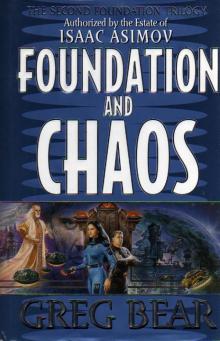 Foundation and Chaos
Foundation and Chaos Halo: Silentium
Halo: Silentium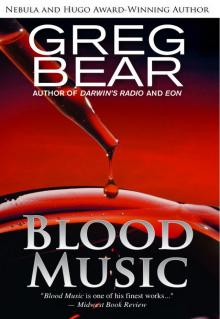 Blood Music
Blood Music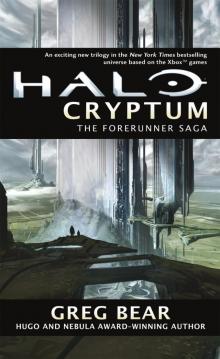 Halo: Cryptum
Halo: Cryptum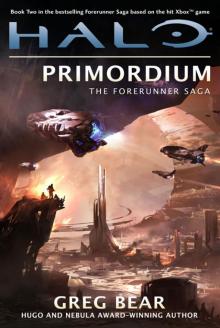 Halo: Primordium
Halo: Primordium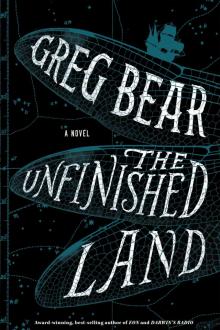 The Unfinished Land
The Unfinished Land Hardfought
Hardfought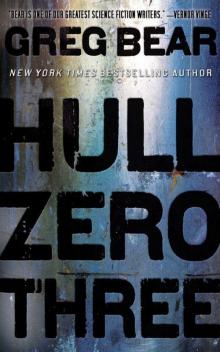 Hull Zero Three
Hull Zero Three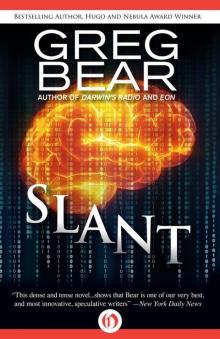 Slant
Slant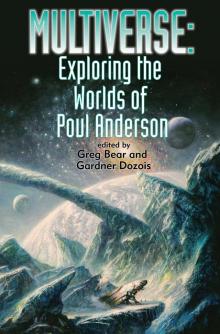 Multiverse: Exploring the Worlds of Poul Anderson
Multiverse: Exploring the Worlds of Poul Anderson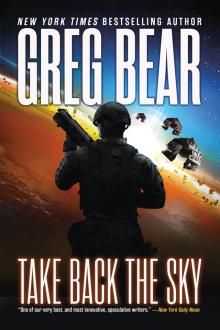 Take Back the Sky
Take Back the Sky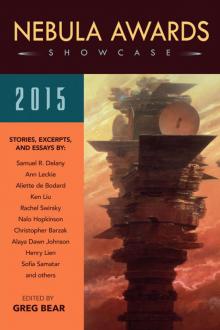 Nebula Awards Showcase 2015
Nebula Awards Showcase 2015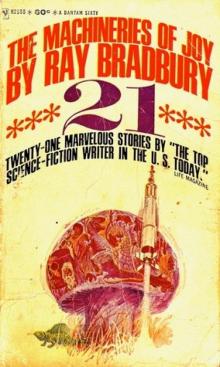 Machineries Of Joy
Machineries Of Joy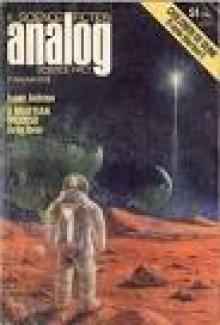 A Martian Ricorso
A Martian Ricorso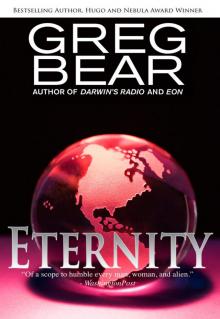 Eternity
Eternity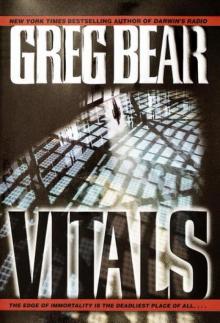 Vitals
Vitals The Infinity Concerto
The Infinity Concerto Beyond the Farthest Suns
Beyond the Farthest Suns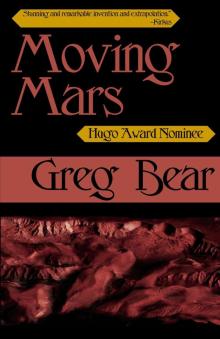 Moving Mars
Moving Mars Quantico
Quantico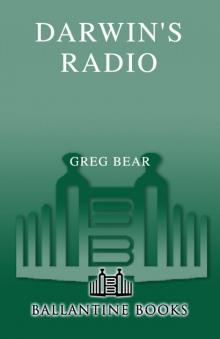 Darwin's Radio
Darwin's Radio Beyond Heaven's River
Beyond Heaven's River Star Wars - Rogue Planet
Star Wars - Rogue Planet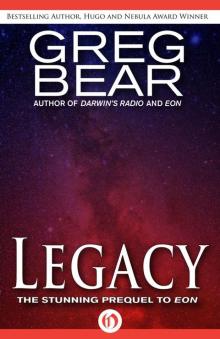 Legacy (Eon, 1)
Legacy (Eon, 1)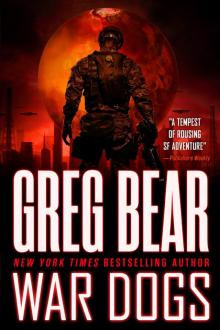 War Dogs: Ares Rising
War Dogs: Ares Rising Sisters
Sisters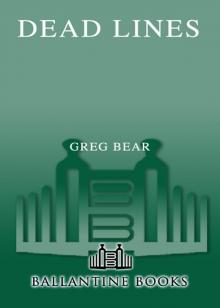 Dead Lines
Dead Lines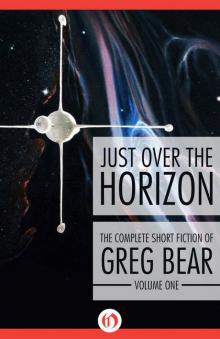 Just Over the Horizon (The Complete Short Fiction of Greg Bear Book 1)
Just Over the Horizon (The Complete Short Fiction of Greg Bear Book 1) Eon (Eon, 2)
Eon (Eon, 2) Venging
Venging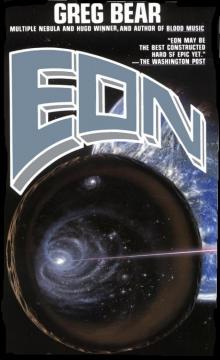 Eon
Eon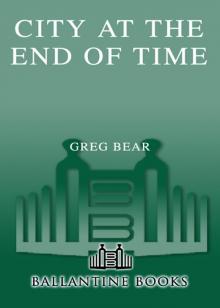 City at the End of Time
City at the End of Time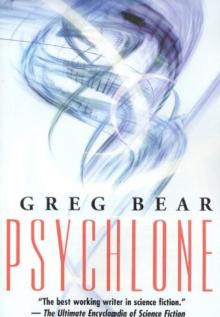 Psychlone
Psychlone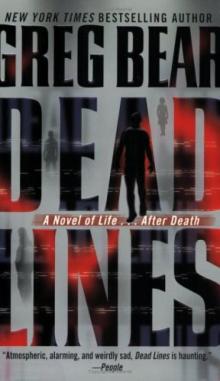 Dead Lines, A Novel of Life... After Death
Dead Lines, A Novel of Life... After Death Eternity (Eon, 3)
Eternity (Eon, 3) Cryptum
Cryptum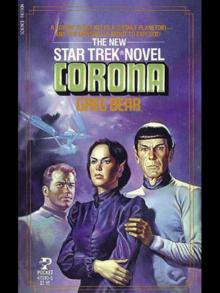 Corona
Corona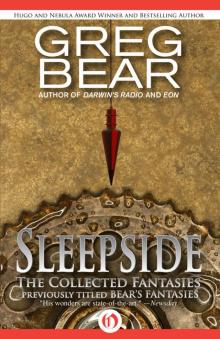 Sleepside: The Collected Fantasies
Sleepside: The Collected Fantasies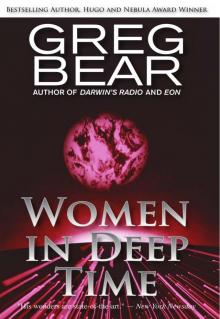 Women in Deep Time
Women in Deep Time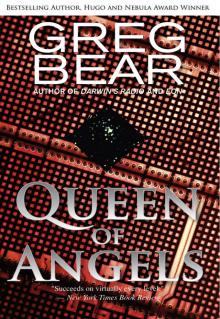 Queen of Angels
Queen of Angels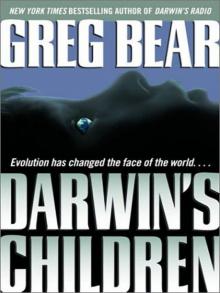 Darwin's Children
Darwin's Children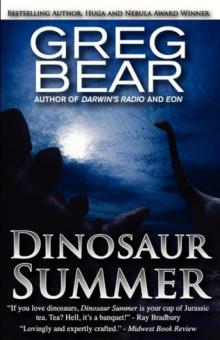 Dinosaur Summer
Dinosaur Summer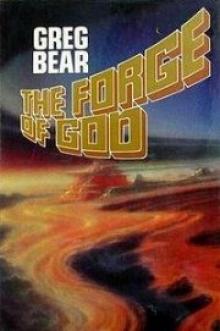 The Forge of God tfog-1
The Forge of God tfog-1 Foundation and Chaos f-9
Foundation and Chaos f-9 Star Wars: Rogue Planet
Star Wars: Rogue Planet The Forge of God
The Forge of God Mariposa
Mariposa Halo: Cryptum: Book One of the Forerunner Saga
Halo: Cryptum: Book One of the Forerunner Saga Strength of Stones
Strength of Stones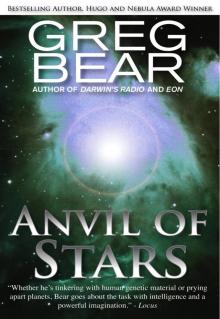 Anvil of Stars
Anvil of Stars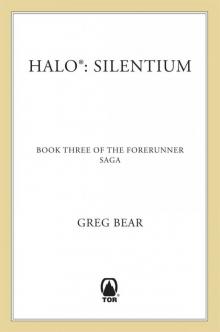 B00AQUQDQO EBOK
B00AQUQDQO EBOK Anvil of Stars tfog-2
Anvil of Stars tfog-2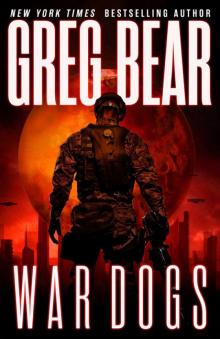 Ares Rising 1: War Dogs
Ares Rising 1: War Dogs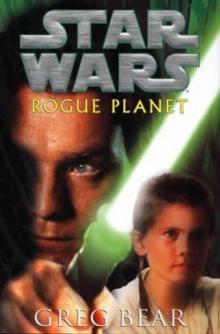 Rogue Planet (star wars)
Rogue Planet (star wars) The Machineries of Joy
The Machineries of Joy Far Thoughts and Pale Gods
Far Thoughts and Pale Gods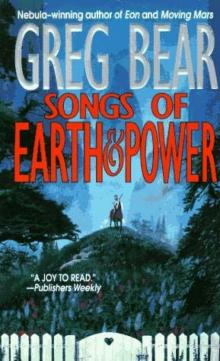 Songs of Earth and Power Omnibus
Songs of Earth and Power Omnibus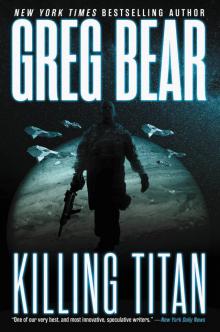 Killing Titan
Killing Titan Darwin's Radio d-1
Darwin's Radio d-1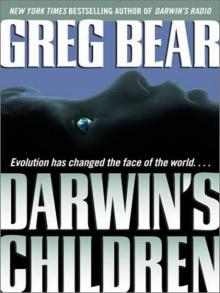 Darwin's Children d-2
Darwin's Children d-2